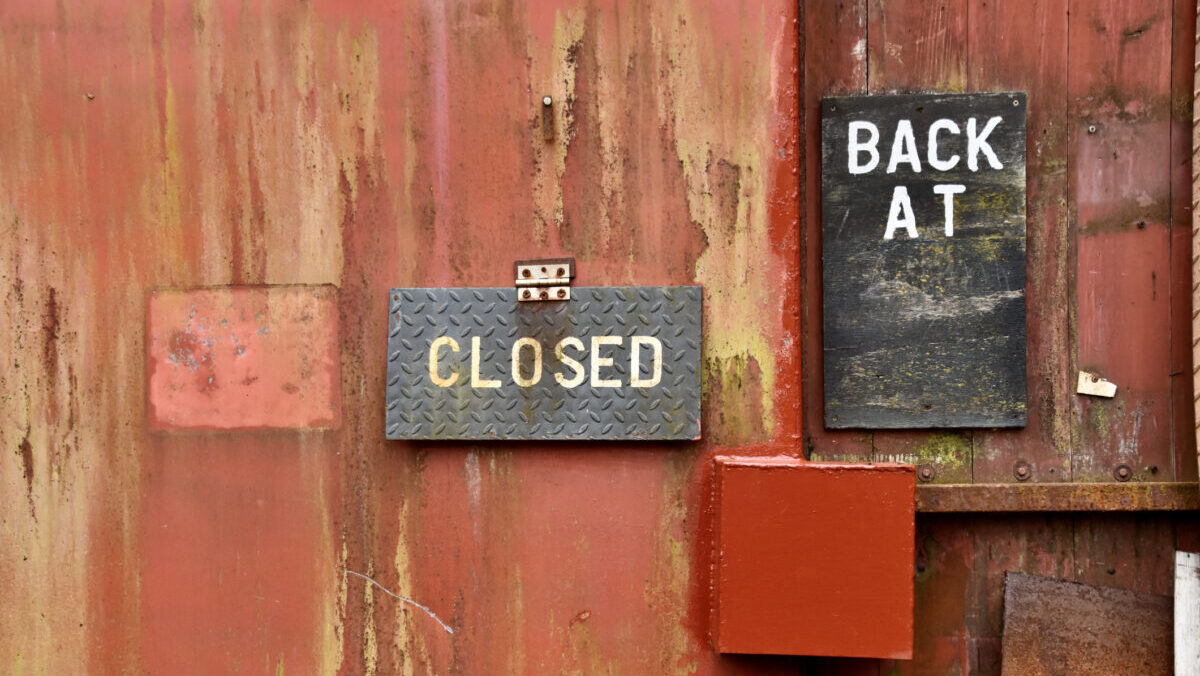Japanese conglomerates ramp up investment in WA nickel laterite just as Ravensthorpe operations shuts down (again)
Lithium hopefuls LTR and LLL hit 80%+ completion rates on major 2024 spodumene projects
Boss up 8% on quarterly with Alta Mesa to join Honeymoon in uranium production by May
There have been few places sadder than WA nickel in 2024, with even 80,000tpa Nickel West under review by mining giant BHP (ASX:BHP).
It may have even more capacity to wave the underperforming asset goodbye with a potential merger with Anglo American — targeted for its copper and met coal — on the cards.
If the $60 billion takeover progresses it would almost certainly mean asset sales of some description, with spin-offs of its unattractive platinum, diamond and South African iron ore businesses already touted.
So far this year some ~50,000t of nickel production has been paused in Australia, a response to a price crash to US$16,000/t earlier this year caused by a rampant increase in cheap Indonesian supply — much of it sold to previously western dependent battery manufacturers for the first time.
That sense of despair grew yet starker as First Quantum Minerals announced the mothballing of its Ravensthorpe nickel and cobalt mine, which produced 3700t of nickel in the first quarter at all in sustaining costs of US$12.51/lb (equivalent to US$27,500/t) in the first quarter even after tightening the belt by shifting ceasing mining in favour of stockpile processing.
Multiple news agencies reported that miners on the site, which employs around 330 people, would be told today about plans to shut down for the third time since its 2008 opening and second time in the past seven years.
While Ravy’s cost profile is pretty wild, BHP has previously stated it needs US$20,000/t to turn a profit after losing US$200m in the December half of 2023. Prices have rebounded to US$19,100/t in recent weeks.
Amid all this crappy news could a new source of nickel emerge that can weather the cycles?
Ardea Resources (ASX:ARL) is hoping it can finally develop the long dormant Kalgoorlie Nickel Project with the help of Japanese conglomerates eager to break their reliance on Chinese and Indonesian sources of nickel.
It announced an MoU today with Sumitomo and Mitsubishi which will see the Japanese consortium drop $98.5m on a definitive feasibility study on the nickel laterite project to earn a 50% interest.
Long time coming
The vast bulk of WA’s nickel production comes from sulphide sources, hard rock deposits either disseminated in low grade open pits like Mt Keith or high grade narrow veined underground deposits like those found in Kambalda and Leinster.
But there are a handful which produce battery grade mixed hydroxide and other beneficiated nickel products from shallow laterite sources, the same kind typically mined in South-East Asia.
Glencore’s Murrin Murrin near Laverton is the largest standalone producer of nickel and cobalt in Australia. Originally developed by Andrew Forrest’s failed Anaconda Nickel it has been turned into a reliable operator gradually over the past two decades.
Ravensthorpe, owned by First Quantum and POSCO, is the other operating lateritic nickel project, though high costs have plagued it since BHP opened and shut the project within months in 2009 after splurging billions on its construction. Today’s closure will likely leave a pall over the seemingly positive news emerging from Ardea, though it has suggested in the past it will be at the bottom end of the cost curve if the KNP can get off the ground.
It leaves Murrin Murrin as the only lateritic nickel mine operating in WA, with Glencore stating earlier this year that the 35,000tpa producer remained an important part of its Aussie operations.
$157m capped Ardea rose early in trade before sliding 5.9% as investors digested the Ravensthorpe news.
A swag of deposits of a similar nature have remained undeveloped for years, including a host on Australia’s East Coast as well as the KNP, Alliance Nickel’s (ASX:AXN) NiWest and NiCo Resources’ (ASX:NC1) Wingellina.
These operations have historically been viewed as higher cost, especially on the capex side, due to the spending associated with high pressure acid leach plants and reagents required to run them.
Sulphide deposits in WA largely have an established processing pathway through BHP’s integrated network of concentrators, a smelter and refinery.
But Ardea’s previous numbers for KNP — 6.1Mt of nickel metal in resource and 1.36Mt in reserve at a grade of 0.71% — suggested it could host an opex of US$5,763/t on a C1 basis after cobalt credits, competitive against both western and Indonesian producers.
And it isn’t the only local player to garner support from overseas investors. Stellantis backed Alliance announced a non-binding term sheet with Korea’s Samsung in January, just as nickel prices hit a floor. It shows demand remains strong outside China for EV-grade nickel, even if oversupply is currently weighing down its value.
Mitsubishi and Sumitomo, which is also partnering on a downstream processing study with local lithium play Liontown Resources (ASX:LTR), can earn 35% via the completion of a DFS and up to 50% if a positive final investment decision is made.
KNP has been one of those forever projects in the WA mining landscape. Found by the now sadly departed Heron Resources in the 1990s, around the same time Murrin Murrin, Cawse and Bulong blazed a rocky trail for WA nickel laterites, the KNP drew attention from the likes of BHP and Vale in the 2000s nickel boom before reemerging after years on the bench when Heron spun out Ardea in 2017.
The company caught the imagination over the next year thanks to all time high cobalt prices before gravity again came for the boom-bust market.
Ardea Resources (ASX:ARL) share price today
Liontown, Leo edge towards lithium producer status
Lithium mid-tiers have been a touch and go proposition in recent times, but the next cabs off the rank when it comes to the battery metal say they are on track to deliver their projects on schedule.
Liontown Resources (ASX:LTR) reckons its Kathleen Valley mine, notably the first underground hard rock lithium deposit, was over 85% complete at the end of March.
Its concentrator was around 90% complete on an earned value basis, with production still anticipated to begin by mid-2024.
LTR still had $358.1m in the bank having raised $550m in debt in March from banks and government credit agencies to help complete the ~$1b development.
That came after falling lithium prices and analyst forecasts prompted the cessation of a larger debt package. Liontown responded by pausing and reviewing plans to ramp up early doors from a mining rate of 3Mtpa to 4Mtpa, with a market update expected this quarter.
Over in Mali Leo Lithium (ASX:LLL), suspended from trade since September last year, says it hit an 80% completion rate at the Goulamina project at the end of March.
The first spodumene mine in Africa, Leo recently traded a further 5% to JV partner — China’s Ganfeng — to reduce its stake in the project to just 40%.
That is before any free carried interest claim from Mali, which is currently in protracted negotiations with Leo and Ganfeng 5% sale for US$65m was made with the intention of using the cash to fund a likely settlement due to the Malian Government.
A dispute with the host country led Leo to pause plans to sell direct shipping ore during Goulamina’s ramp up phase, though weak market conditions likely would have made returns unpalatable regardless.
Leo has said it will not file its 2023 financial report until it has reached a resolution with the Malian Government.
Burgundy down as cash falls
Burgundy Diamond Mines (ASX:BDM), one of only three active diamond producers on the ASX, saw its cash drop from US$94.4m to US$82.5m in the March quarter, but says operations at its Ekati mine are on the way up after nearly doubling production YoY from 798,199 carats in Q1 2023 to 1.32Mct in Q1 2024.
BDM fetched US$117m in revenue at an average selling price of US$89/ct, though prices were US$94/ct before receipts for low value carats sold in the previous quarter were taken into account.
Burgundy held three auctions in the quarter, with a 23.15 fancy yellow from Ekati among the stones to be displayed at a viewing event in Dubai and sale auction at Antwerp in the June Quarter.
BDM finished the quarter with US$43.7m in net debt, a blowout from $US$34.9m at December 31.
However, the company said EBITDA was 49% up YoY to US$26m.
Up 8.4% today was Boss Energy (ASX:BOE), which said its 30% owned Alta Mesa mine in Texas would be producing by May.
It comes after the successful commissioning of its 2.45Mlbpa Honeymoon mine in South Australia, where Boss announced production of its first drum of uranium last week. The ramp up of Honeymoon is now under way with MD Duncan Craib saying early indications were its new ion exchange processing method had been ‘extremely effective’.
Boss ended the quarter with $99.5m in the bank after spending ~$124m on stakes in Alta Mesa and enCore Energy and over $18m finishing off development at Honeymoon.
The materials sector rose 0.43% as of 3.50pm AEST, with uranium stocks at the top of the winners’ list.
Today’s Best Miners
Boss Energy (ASX:BOE) (uranium) +6.6%
Deep Yellow (ASX:DYL) (uranium) +7.2%
Liontown Resources (ASX:LTR) (lithium) +6.5%
Silex Systems (ASX:SLX) (uranium) +5.8%
Today’s Worst Miners
Neometals (ASX:NMT) (battery metals recycling) -4.8%
Newmont Corporation (ASX:NEM) (gold) -1.4%
Gold Road Resources (ASX:GOR) (gold) -3.6%
WA1 Resources (ASX:WA1) (niobium) -1%
Monstars share prices today
ASX 300 Metals and Mining Index today
The post Monsters of Rock: Cursed Ravensthorpe shuts AGAIN. Can these Japanese conglomerates bring WA nickel back to life? appeared first on Stockhead.






















